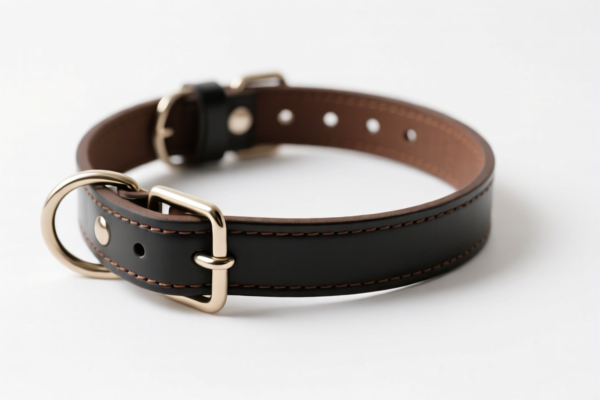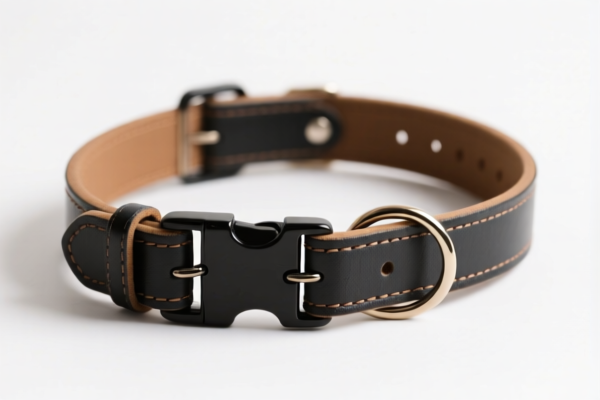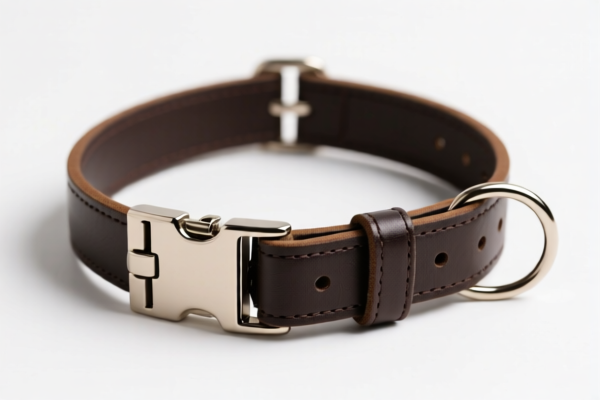| HS Code | Official Doc | Tariff Rate | Origin | Destination | Effective Date |
|---|---|---|---|---|---|
| 6307908910 | Doc | 37.0% | CN | US | 2025-05-12 |
| 6307909882 | Doc | 37.0% | CN | US | 2025-05-12 |
| 8308909000 | Doc | 57.7% | CN | US | 2025-05-12 |
| 8308906000 | Doc | 58.9% | CN | US | 2025-05-12 |
| 8306100000 | Doc | 35.8% | CN | US | 2025-05-12 |
| 8306100000 | Doc | 35.8% | CN | US | 2025-05-12 |
| 4201003000 | Doc | 57.4% | CN | US | 2025-05-12 |
| 4201006000 | Doc | 57.8% | CN | US | 2025-05-12 |
| 4203300000 | Doc | 57.7% | CN | US | 2025-05-12 |
| 9506400000 | Doc | 35.1% | CN | US | 2025-05-12 |
| 9506696010 | Doc | 42.4% | CN | US | 2025-05-12 |




Dog Collar
A dog collar is a band or strap worn around the neck of a dog. They serve multiple purposes, ranging from identification and control to fashion and training.
Material
Dog collars are manufactured from a diverse range of materials, each offering different benefits:
- Nylon: A common, durable, and affordable option. Available in various colors and patterns. Often adjustable and suitable for everyday use.
- Leather: Known for its durability, comfort, and classic aesthetic. Requires some maintenance to prevent cracking and wear.
- Chain: Typically used for training or as a fashion statement, often heavier and more robust. Can be uncomfortable for long-term wear.
- Biothane: A synthetic material that is waterproof, odor-resistant, and very durable. A good choice for active dogs.
- Metal (Stainless Steel, Aluminum): Durable and often used for specialized collars (e.g., choke chains, prong collars).
- Reflective Materials: Incorporated into nylon or other materials for increased visibility in low-light conditions.
Purpose & Function
- Identification: The primary function is to hold identification tags, including the owner’s contact information and potentially medical details.
- Leash Attachment: Provides a secure point for attaching a leash for control during walks and training.
- Training: Specialized collars (see 'Common Types' below) are used for various training methods.
- Fashion: Collars can be decorative, reflecting the dog's personality or the owner's style.
- Safety: Reflective collars improve visibility, while GPS-enabled collars offer tracking capabilities.
Usage Scenarios
- Daily Walks: Essential for controlling the dog during walks in public spaces.
- Training Classes: Used with leashes for obedience training.
- Outdoor Activities: Important for keeping the dog secure during hikes, camping, or other outdoor adventures.
- Boarding/Kenneling: Required by most facilities for identification and control.
- Emergency Situations: Identification tags provide crucial information if the dog becomes lost.
Common Types
- Flat Collar: The most basic and common type, suitable for everyday use.
- Martingale Collar (Limited-Slip Collar): Designed for dogs with narrow heads, preventing them from slipping out of the collar.
- Choke Chain: Used for training, applying pressure when the dog pulls. Requires careful and knowledgeable use to avoid injury.
- Prong Collar: Another training tool, featuring metal prongs that apply pressure. Should only be used by experienced trainers.
- Head Halter: Controls the dog’s head, offering more control during walks.
- GPS Collar: Utilizes GPS technology to track the dog’s location.
- Electronic Collar (E-Collar): Delivers a static correction to the dog. Controversial and requires responsible use.
- Reflective Collar: Enhances visibility in low-light conditions.
- Breakaway Collar: Designed to release quickly if snagged, often used for dogs in kennels or multi-dog households.
Dog collars fall under the classification of saddlery and harness for any animal. Here are the relevant HS codes based on the provided reference material:
- 4201003000: This HS code covers dog leashes, collars, muzzles, harnesses and similar dog equipment. Chapter 42 relates to articles of leather or of composition leather, not specified elsewhere. Heading 0030 specifically refers to dog leashes, collars, muzzles, harnesses and similar equipment.
- 4201006000: This HS code covers other saddlery and harness for any animal (including traces, leads, knee pads, muzzles, saddle cloths, saddle bags, dog coats and the like), of any material. Chapter 42 relates to articles of leather or of composition leather, not specified elsewhere. Heading 0060 covers other saddlery and harness equipment.
Regarding HS code 4201003000 and 4201006000, the material composition of the dog collar is important for correct classification. If the collar is made of leather or composition leather, 4201003000 is appropriate. If it's made of other materials, 4201006000 should be used.
Customer Reviews
这个页面简直是救星!我需要找到我狗项圈的正确HS编码,这里的信息让事情变得简单明了。
关税率和HS编码展示得很好。我希望有一个比较功能,可以查看不同材料的哪个编码更具成本效益。
对HS编码4201006000的解释非常准确。它让我轻松地确定了我非皮革项圈的正确分类。
关于不同种类狗项圈的部分非常有信息量。它帮助我理解了它们所使用的各种材料和用途。
信息清晰且组织良好。我希望能有更多关于如何在实际贸易场景中应用HS编码的例子。